 Your new post is loading...
 Your new post is loading...

|
Scooped by
Ed Rybicki
July 13, 2014 5:54 AM
|
Demand for organic foods is partially driven by consumers' perceptions that they are more nutritious. However, scientific opinion is divided on whether there are significant nutritional differences between organic and non-organic foods, and two recent reviews have concluded that there are no differences. In the present study, we carried out meta-analyses based on 343 peer-reviewed publications that indicate statistically significant and meaningful differences in composition between organic and non-organic crops/crop-based foods. Most importantly, the concentrations of a range of antioxidants such as polyphenolics were found to be substantially higher in organic crops/crop-based foods, with those of phenolic acids, flavanones, stilbenes, flavones, flavonols and anthocyanins being an estimated 19 (95 % CI 5, 33) %, 69 (95 % CI 13, 125) %, 28 (95 % CI 12, 44) %, 26 (95 % CI 3, 48) %, 50 (95 % CI 28, 72) % and 51 (95 % CI 17, 86) % higher, respectively. Many of these compounds have previously been linked to a reduced risk of chronic diseases, including CVD and neurodegenerative diseases and certain cancers, in dietary intervention and epidemiological studies. Additionally, the frequency of occurrence of pesticide residues was found to be four times higher in conventional crops, which also contained significantly higher concentrations of the toxic metal Cd. Significant differences were also detected for some other (e.g. minerals and vitamins) compounds. There is evidence that higher antioxidant concentrations and lower Cd concentrations are linked to specific agronomic practices (e.g. non-use of mineral N and P fertilisers, respectively) prescribed in organic farming systems. In conclusion, organic crops, on average, have higher concentrations of antioxidants, lower concentrations of Cd and a lower incidence of pesticide residues than the non-organic comparators across regions and production seasons.

|
Scooped by
Ed Rybicki
July 4, 2014 8:11 AM
|
In 2005, with the backing of the Bill & Melinda Gates Foundation, [James] Dale began experimenting with ways to add beta-carotene, a nutrient the human body uses to produce vitamin A, to the East African Highland cooking banana, a staple in the Ugandan diet. "This may finally give us access to this subset of the population," Dale said. "So I figured it was worth a shot." In June, Dale's bananas made it to an important milestone, gaining approval to begin human trials in the United States, and in the process picked up a catchy new title: super-bananas. While the fate of the super-bananas has yet to be determined, what is known is just how these bananas became super.

|
Scooped by
Ed Rybicki
July 4, 2014 6:49 AM
|
Engineers have discovered that LEGO bricks make good environments for studying plants and their roots.

|
Scooped by
Ed Rybicki
June 30, 2014 7:39 AM
|

|
Scooped by
Ed Rybicki
June 30, 2014 6:46 AM
|
Decreasing the timeframe for cell culture process development has been a key goal toward accelerating biopharmaceutical development. Advanced Microscale Bioreactors (ambr™) is an automated micro-bioreactor system with miniature single-use bioreactors with a 10–15 mL working volume controlled by an automated workstation. This system was compared to conventional bioreactor systems in terms of its performance for the production of a monoclonal antibody in a recombinant Chinese Hamster Ovary cell line. The miniaturized bioreactor system was found to produce cell culture profiles that matched across scales to 3 L, 15 L, and 200 L stirred tank bioreactors. The processes used in this article involve complex feed formulations, perturbations, and strict process control within the design space, which are in-line with processes used for commercial scale manufacturing of biopharmaceuticals. Changes to important process parameters in ambr™ resulted in predictable cell growth, viability and titer changes, which were in good agreement to data from the conventional larger scale bioreactors. ambr™ was found to successfully reproduce variations in temperature, dissolved oxygen (DO), and pH conditions similar to the larger bioreactor systems. Additionally, the miniature bioreactors were found to react well to perturbations in pH and DO through adjustments to the Proportional and Integral control loop. The data presented here demonstrates the utility of the ambr™ system as a high throughput system for cell culture process development. © 2014 American Institute of Chemical Engineers Biotechnol. Prog., 30:718–727, 2014

|
Scooped by
Ed Rybicki
June 30, 2014 6:35 AM
|
We used expressed sequence tag library and whole genome sequence mining to identify a suite of putative desaturase genes representing the four main activities required for production of polyunsaturated fatty acids in hemp seed oil. Phylogenetic-based classification and developing seed transcriptome analysis informed selection for further analysis of one of seven Δ12 desaturases and one of three Δ15 desaturases that we designate CSFAD2A and CSFAD3A, respectively. Heterologous expression of corresponding cDNAs inSaccharomyces cerevisiae showed CSFAD2A to have Δx+3 activity, while CSFAD3A activity was exclusively at the Δ15 position. TILLING of an ethyl methane sulphonate mutagenized population identified multiple alleles including non-sense mutations in both genes and fatty acid composition of seed oil confirmed these to be the major Δ12 and Δ15 desaturases in developing hemp seed. Following four backcrosses and sibling crosses to achieve homozygosity, csfad2a-1 was grown in the field and found to produce a 70 molar per cent high oleic acid (18:1Δ9) oil at yields similar to wild type. Cold-pressed high oleic oil produced fewer volatiles and had a sevenfold increase in shelf life compared to wild type. Two low abundance octadecadienoic acids, 18:2Δ6,9 and 18:2Δ9,15, were identified in the high oleic oil, and their presence suggests remaining endogenous desaturase activities utilize the increased levels of oleic acid as substrate. Consistent with this, CSFAD3A produces 18:2Δ9,15 from endogenous 18:1Δ9 when expressed in S. cerevisiae. This work lays the foundation for the development of additional novel oil varieties in this multipurpose low input crop.

|
Scooped by
Ed Rybicki
June 30, 2014 6:32 AM
|
Transgenic plants that are being developed for commercial cultivation must be tested under field conditions to monitor their effects on surrounding wildlife and conventional crops. Developers also use this opportunity to evaluate the performance of transgenic crops in a typical environment, although this is a matter of commercial necessity rather than regulatory compliance. Most countries have adapted existing regulations or developed new ones to deal specifically with transgenic crops and their commodities. The European Union (EU) is renowned, or perhaps notorious, for having the broadest and most stringent regulations governing such field trials in the world. This reflects its nominal adherence to the precautionary approach, which assumes all transgenic crops carry an inherent risk. Therefore, field trials in the EU need to demonstrate that the risk associated with deploying a transgenic crop has been reduced to the level where it is regarded as acceptable within the narrowly defined limits of the regulations developed and enforced (albeit inconsistently) by national and regional governments, that is, that there is no greater risk than growing an equivalent conventional crop. The involvement of national and regional competent authorities in the decision-making process can add multiple layers of bureaucracy to an already-intricate process. In this review, we use country-based case studies to show how the EU, national and regional regulations are implemented, and we propose strategies that could increase the efficiency of regulation without burdening developers with further unnecessary bureaucracy.

|
Scooped by
Ed Rybicki
June 26, 2014 7:32 AM
|
In the last decade, Internet usage has grown tremendously on a global scale. The increasing popularity and frequency of Internet use has led to an increasing number of reports highlighting the potential negative consequences of overuse. Over the last decade, research into Internet addiction has proliferated. This paper reviews the existing 68 epidemiological studies of Internet addiction that (i) contain quantitative empirical data, (ii) have been published after 2000, (iii) include an analysis relating to Internet addiction, (iv) include a minimum of 1000 participants, and (v) provide a full-text article published in English using the database Web of Science. Assessment tools and conceptualisations, prevalence, and associated factors in adolescents and adults are scrutinised. The results reveal the following. First, no gold standard of Internet addiction classification exists as 21 different assessment instruments have been identified. They adopt official criteria for substance use disorders or pathological gambling, no or few criteria relevant for an addiction diagnosis, time spent online, or resulting problems. Second, reported prevalence rates differ as a consequence of different assessment tools and cut-offs, ranging from 0.8% in Italy to 26.7% in Hong Kong. Third, Internet addiction is associated with a number of sociodemographic, Internet use, and psychosocial factors, as well as comorbid symptoms and disorder in adolescents and adults. The results indicate that a number of core symptoms (i.e., compulsive use, negative outcomes and salience) appear relevant for diagnosis, which assimilates Internet addiction and other addictive disorders and also differentiates them, implying a conceptualisation as syndrome with similar etiology and components, but different expressions of addictions. Limitations include the exclusion of studies with smaller sample sizes and studies focusing on specific online behaviours. Conclusively, there is a need for nosological precision so that ultimately those in need can be helped by translating the scientific evidence established in the context of Internet addiction into actual clinical practice.

|
Scooped by
Ed Rybicki
June 25, 2014 10:23 AM
|
A controversial study that found health problems in rats exposed to genetically engineered maize returns to the scientific literature. In 2012, a research team led by Gilles-Eric Séralini at the University of Caen in France published a study in Food and Chemical Toxicology that found rats exposed to genetically engineered maize were more likely to develop tumors and die earlier. But the journal editors ended up retracting the study after a swarm of letters and a review by the editors identified a number ofproblems with the study. Now, Séralini’s team has republished its report in another journal, Environmental Sciences Europe. Although the paper has resurfaced in the literature, many researchers critical of the original study are not convinced that the new report is any more credible.

|
Scooped by
Ed Rybicki
June 23, 2014 8:59 AM
|
GreenGate is a simple and efficient cloning system for rapidly assembling plant transformation constructs. It is based on the Golden Gate method. Using the type IIS restriction endonuclease BsaI and T4 DNA ligase, ready-to-use plant transformation vectors are built from six types of pre-cloned insert modules and a destination vector in a one-pot reaction. The six module types are (1) plant promoter, (2) N-terminal tag, (3) coding sequence (i.e. the gene of interest), (4) C-terminal tag, (5) plant terminator and (6) plant resistance cassette.

|
Scooped by
Ed Rybicki
June 23, 2014 8:49 AM
|
Plant molecular pharming has emerged as a niche technology for the manufacture of pharmaceutical products indicated for chronic and infectious diseases, particularly for products that do not fit into the current industry-favored model of fermenter-based production campaigns. In this review, we explore the areas where molecular pharming can make the greatest impact, including the production of pharmaceuticals that have novel glycan structures or that cannot be produced efficiently in microbes or mammalian cells because they are insoluble or toxic. We also explore the market dynamics that encourage the use of molecular pharming, particularly for pharmaceuticals that are required in small amounts (such as personalized medicines) or large amounts (on a multi-ton scale, such as blood products and microbicides) and those that are needed in response to emergency situations (pandemics and bioterrorism). The impact of molecular pharming will increase as the platforms become standardized and optimized through adoption of good manufacturing practice (GMP) standards for clinical development, offering a new opportunity to produce inexpensive medicines in regional markets that are typically excluded under current business models.

|
Scooped by
Ed Rybicki
June 23, 2014 8:42 AM
|
The moss Physcomitrella patens is an important model organism to study plant evolution, development, physiology and biotechnology. Here, we have generated microarray gene expression data covering the principal developmental stages, culture forms and some environmental/stress conditions. Example analyses of developmental stages and growth conditions as well as abiotic stress treatments demonstrate that i) growth stage is dominant over culture conditions, ii) liquid culture is not stressful for the plant, iii) low pH might aid protoplastation by reduced expression of cell wall structure genes, iv) largely the same gene pool mediates response to de- and rehydration, and v) AP2/EREBP and NAC transcription factors play important roles in stress response reactions. With regard to the AP2 gene family, phylogenetic analysis and comparison with Arabidopsis thaliana shows commonalities as well as uniquely expressed family members under drought, light perturbations and protoplastation. Gene expression profiles for P. patens are available for the scientific community via the easy-to-use tool at "http://https://www.genevestigator.com" "https://www.genevestigator.com". By providing large scale expression profiles, the usability of this model organism is further enhanced, e.g. by enabling selection of control genes for quantitative Real Time PCR. Now, gene expression levels across a broad range of conditions can be accessed online for P. patens.

|
Scooped by
Ed Rybicki
June 23, 2014 8:16 AM
|
|

|
Scooped by
Ed Rybicki
July 7, 2014 7:21 AM
|
Commercial protein drugs, which include recombinant monoclonal antibodies, subunit vaccines, immune modulators, and human enzymes, will likely exceed $100billion in market size within the next two years. A component of this extraordinary growth is the availability of new technologies to speed the time to market of new biologics, and to create improved versions of existing drugs. Among the new developments is the emerging use of green plants for recombinant protein production due to advantages over yeast, cultured mammalian or insect cells, or other living systems. Transient expression of proteins in tobacco, using a new generation of virus-based vectors, is complementing (and sometimes displacing) the use of transgenic plant or cells for drug development. It is becoming increasingly evident that: Government regulatory agencies have accepted plant production in new drug approval and licensureMonoclonal antibody production in plants offers rapid production advantages in comparison to mammalian cells, with at least equivalent product safety, purity and potencyMetabolic engineering of tobacco as a host for protein production is advancing rapidly to allow highly uniform drug products, including post-translational modifications similar to those of human cellsPlant-based manufacturing platforms hold major promise for next generation biogenerics (or biobetters with improved pharmacokinetic properties)Plant-made subunit vaccines are in the pipeline for multiple infectious diseasesOngoing corporate drug development at commercial scale is providing data to accurately determine the potential to reduce manufacturing cost of protein drugs under cGMP requirements using plant protein expression as the starting point PBVAB 2015 is the sixth meeting in this important and successful series. PBVAB 2015 will offer an international forum to review the current state of research in plant protein expression systems, down-stream processing technology, the pipeline of products now in development (including vaccines, monoclonal antibodies, and human enzymes), and efforts in using these technologies in areas beyond human health (including disease prevention in animals and aquaculture).

|
Scooped by
Ed Rybicki
July 4, 2014 7:03 AM
|
Former U.S. Secretary of State Hillary Clinton has expressed her support for genetically modified crops and crop biotechnology. In a 65-minute keynote appearance at the Biotechnology Industry Organization (BIO) convention in San Diego late June, Clinton conversed with Jim Greenwood, BIO president, on a wide range of topics including GMOs. “I stand in favor of using seeds and products that have a proven track record,” Clinton said, adding that biotech professionals need to continue to try to make the case for GMO-skeptics. “There is a big gap between what the facts are, and what the perceptions are.” Clinton noted that there are unwarranted fears surrounding GMOs because many people do not understand science or biotechnology and are easily swayed by code words and misguided perceptions. “Genetically modified sounds ‘Frankensteinish’ – drought resistant sounds really like something you want,” she said.

|
Scooped by
Ed Rybicki
July 1, 2014 10:44 AM
|
Plants are constantly exposed to would-be pathogens in their immediate environment. Yet, despite relying on innate immunity only, plants are resistant to most microbes. They employ pattern-recognition receptors (PRRs) for sensitive and rapid detection of the potential danger caused by microbes and pests. Plant PRRs are either surface-localized receptor kinases (RKs) or receptor-like proteins (RLPs) containing various ligand-binding ectodomains that perceive pathogen-associated molecular patterns (PAMPs) or damage-associated molecular patterns (DAMPs). In this review, I summarize our current knowledge of plant PRRs and their ligands, illustrating the multiple molecular strategies employed by plant PRRs to activate innate immune signaling to survive.

|
Scooped by
Ed Rybicki
June 30, 2014 6:47 AM
|
We report for the first time that the endogenous, pseudo-steady-state, specific intracellular levels of the hydroxyl radical (si-OH) oscillate in an ultradian fashion (model system: the microalga, Chlorella vulgaris), and also characterize the various rhythm parameters. The ultradian rhythm in the endogenous levels of the si-OH occurred with an approximately 6 h period in the daily cycle of light and darkness. Further, we expected that the rhythm reset to a shorter period could rapidly switch the cellular redox states that could favor lipid accumulation. We reset the endogenous rhythm through entrainment with UVA radiation, and generated two new ultradian rhythms with periods of approximately 2.97 h and 3.8 h in the light phase and dark phase, respectively. The reset increased the window of maximum lipid accumulation from 6 h to 12 h concomitant with the onset of the ultradian rhythms. Further, the saturated fatty acid content increased approximately to 80% of total lipid content, corresponding to the peak maxima of the hydroxyl radical levels in the reset rhythm. © 2014 American Institute of Chemical Engineers Biotechnol. Prog., 30:673–680, 2014

|
Scooped by
Ed Rybicki
June 30, 2014 6:44 AM
|
Lutein is a carotenoid with a purported role in protecting eyes from oxidative stress, particularly the high-energy photons of blue light. Statistical optimization was performed to growth media that supports a higher production of lutein by heterotrophically cultivated Chlorella vulgaris. The effect of media composition of C. vulgaris on lutein was examined using fractional factorial design (FFD) and central composite design (CCD). The results indicated that the presence of magnesium sulfate, EDTA-2Na, and trace metal solution significantly affected lutein production. The optimum concentrations for lutein production were found to be 0.34 g/L, 0.06 g/L, and 0.4 mL/L for MgSO4·7H2O, EDTA-2Na, and trace metal solution, respectively. These values were validated using a 5-L jar fermenter. Lutein concentration was increased by almost 80% (139.64 ± 12.88 mg/L to 252.75 ± 12.92 mg/L) after 4 days. Moreover, the lutein concentration was not reduced as the cultivation was scaled up to 25,000 L (260.55 ± 3.23 mg/L) and 240,000 L (263.13 ± 2.72 mg/L). These observations suggest C. vulgaris as a potential lutein source. © 2014 American Institute of Chemical Engineers Biotechnol. Prog., 30:736–743, 2014

|
Scooped by
Ed Rybicki
June 30, 2014 6:33 AM
|
The development of inexpensive and highly productive biomass sources of biofuel is a priority in global climate change biology. Arundo donax, also known as the giant reed, is recognized as one of the most promising nonfood bioenergy crops in Europe. Despite its relevance, to date no genomic resources are available to support the characterization of the developmental, adaptive and metabolic traits underlying the high productivity of this nonmodel species. We hereby present the first report on the de novo assembly of bud, culm, leaf and root transcriptomes of A. donax, which can be accessed through a customized BLAST server (http://ecogenomics.fmach.it/arundo/) for mining and exploring the genetic potential of this species. Based on functional annotation and homology comparison to 19 prospective biofuel Poaceae species, we provide the first genomic view of this so far unexplored crop and indicate the model species with highest potential for comparative genomics approaches. The analysis of the transcriptome reveals strong differences in the enrichment of the Gene Ontology categories and the relative expression among different organs, which can guide future efforts for functional genomics or genetic improvement of A. donax. A set of homologs to key genes involved in lignin, cellulose, starch, lipid metabolism and in the domestication of other crops is discussed to provide a platform for possible enhancement of productivity and saccharification efficiency in A. donax.

|
Scooped by
Ed Rybicki
June 27, 2014 9:46 AM
|
The production of recombinant biopharmaceuticals (pharmaceutical proteins) is a strongly growing area in the pharmaceutical industry. While most products to date are produced in mammalian cell cultures, namely CHO cells, plant-based production systems gained increasing acceptance over the last years. Different plant systems have been established which are suitable for standardization and precise control of cultivation conditions, thus meeting the criteria for pharmaceutical production. The majority of biopharmaceuticals comprise glycoproteins. Therefore, differences in protein glycosylation between humans and plants have to be taken into account and plant-specific glycosylation has to be eliminated to avoid adverse effects on quality, safety and efficacy of the products. The basal land plant Physcomitrella patens (moss) has been employed for the recombinant production of high-value therapeutic target proteins (e.g., Vascular Endothelial Growth Factor, Complement Factor H, monoclonal antibodies, Erythropoietin). Being genetically excellently characterized and exceptionally amenable for precise gene targeting via homologous recombination, essential steps for the optimization of moss as a bioreactor for the production of recombinant proteins have been undertaken. Here, we discuss the glyco-engineering approaches to avoid non-human N- and O-glycosylation on target proteins produced in moss bioreactors.

|
Scooped by
Ed Rybicki
June 25, 2014 10:32 AM
|
Will the public swallow science’s best solution to one of the most dangerous wheat pathogens on the planet? One way to hasten the development of a long-lasting stem rust–resistant wheat variety is to engineer plants’ DNA to carry resistance genes, creating what are known as genetically modified (GM) crops. But at many of the facilities that develop wheat varieties—primarily led by academic breeding groups, in contrast to the commercial domination of corn and soybean development—such transgenic approaches are taboo, as public opposition, regulatory expenses, and genetic complexity have kept wheat transgenics off the market. “We could do millions of things [with transgenics],” says Jorge Dubcovsky, a wheat geneticist and breeder at the University of California, Davis, “but we have our hands tied.” Still, a few groups are forging ahead. Dubcovsky and other researchers have begun to clone rust-resistance genes from wheat and other taxa and identify their functions. Others are using those discoveries as springboards to compile the genes into constructs that could be employed to develop a plant with multiple forms of resistance. It’s early days yet, says Brande Wulff at the Sainsbury Laboratory in Norwich, U.K., and downstream consumer resistance to the technology doesn’t discourage him. It could take five to ten years before researchers will have something ready for breeders to try anyway, he says. “By then the public perception could have changed a lot.”

|
Scooped by
Ed Rybicki
June 24, 2014 7:12 AM
|
Eucalypts are the world’s most widely planted hardwood trees. Their outstanding diversity, adaptability and growth have made them a global renewable resource of fibre and energy. We sequenced and assembled >94% of the 640-megabase genome of Eucalyptus grandis. Of 36,376 predicted protein-coding genes, 34% occur in tandem duplications, the largest proportion thus far in plant genomes.Eucalyptus also shows the highest diversity of genes for specialized metabolites such as terpenes that act as chemical defence and provide unique pharmaceutical oils. Genome sequencing of the E. grandis sister species E. globulus and a set of inbred E. grandis tree genomes reveals dynamic genome evolution and hotspots of inbreeding depression. The E. grandis genome is the first reference for the eudicot order Myrtales and is placed here sister to the eurosids. This resource expands our understanding of the unique biology of large woody perennials and provides a powerful tool to accelerate comparative biology, breeding and biotechnology.

|
Scooped by
Ed Rybicki
June 23, 2014 8:54 AM
|
The present invention relates to the generation and cultivation of plant cell material in the form of a non-tissue multilayer cell pack and its use for the accumulation or harvesting of a desired product. In particular, the invention provides a method for the generation of plant cell material in the form of a medium- deprived, porous structured and non-tissue multilayer cell pack and for the subsequent maintenance of said cell pack, comprising the steps of (i) providing a cell pack by separating cells from a plant cell suspension culture, wherein the content of the liquid comprised by the cell pack is reduced and adjusted to correspond to a cell pack density between 0.1 and 0.9 g wet cell weight per cm3, thereby establishing the medium-deprived and porous structured nature of said cell pack, and (ii); incubating said medium-deprived and porous structured cell pack in a non-liquid environment under a relative humidity of 50 to 100 %.

|
Scooped by
Ed Rybicki
June 23, 2014 8:47 AM
|
The proposed clinical trial in Africa of VRC01, a potent broadly neutralizing antibody (bNAb) capable of neutralizing 91% of known HIV-1 isolates, raises concerns about testing a treatment which will be too expensive to be accessible by the most important target population, the poor in under-developed regions such as sub-Saharan Africa. Here, we report the expression of VRC01 in plants as an economic alternative to conventional mammalian-cell-based production platforms. The heavy and light chain genes of VRC01 were cloned onto a single vector, pTRAk.2, which was transformed into Nicotiana benthamiana or Nicotiana tabacum using transient and stable expression production systems respectively. VRC01 has been successfully expressed transiently in plants with expression level of approximately 80 mg antibody/kg; stable transgenic lines expressing up to 100 mg antibody/kg were also obtained. Plant-produced VRC01 from both systems showed a largely homogeneous N-glycosylation profile with a single dominant glycoform. The binding kinetics to gp120 IIIB (approximately 1 nm), neutralization of HIV-1 BaL or a panel of 10 VRC01-sensitive HIV-1 Env pseudoviruses of VRC01 produced in transient and stable plants were also consistent with VRC01 from HEK cells.

|
Scooped by
Ed Rybicki
June 23, 2014 8:38 AM
|
First ISPMF Meeting a Great Success
The first conference of the new International Society for Plant Molecular Farming - ISPMF - was a great success: over 90 delegates, two and a half days of invited keynotes (5), oral presentations (32) and posters (28). Topics covered ranged from experimental expression of candidate vaccine antigens, to metabolic engineering for secondary metabolite production, to optimising cell- and whole plant-based systems for maximal production of antigens, antibodies, enzymes and pigments. The conference was largely academic, but with enough company-based presentations to lend an air of commercial reality to proceedings. It was intimate enough to meet just about everybody, while at the same time offering significant depth in all topics. The Julius Kuhn Institute in Berlin-Dahlem was an excellent choice of venue - minor sound hassles aside - and Berlin was a wonderful host city. The organisers and programme committee did a wonderful job, and there is little doubt the Society has a bright future. The good news is that there is already a next conference proposed - in Gent, Belgium, in 2016 - as well as probable involvement of the Society in the next Plant-Based Vaccines, Antibodies & Biologics meeting in Lausanne in 2015.
|

 Your new post is loading...
Your new post is loading...
 Your new post is loading...
Your new post is loading...





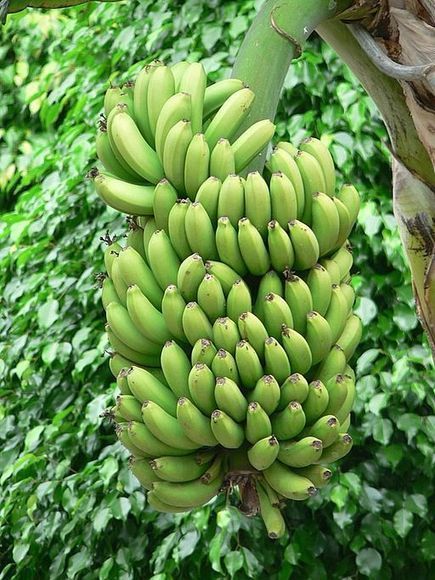


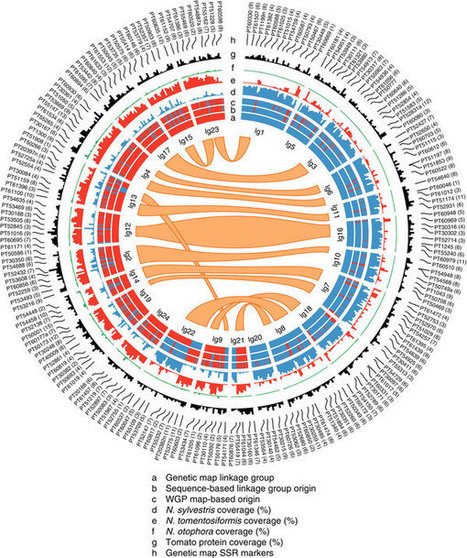

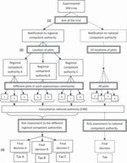

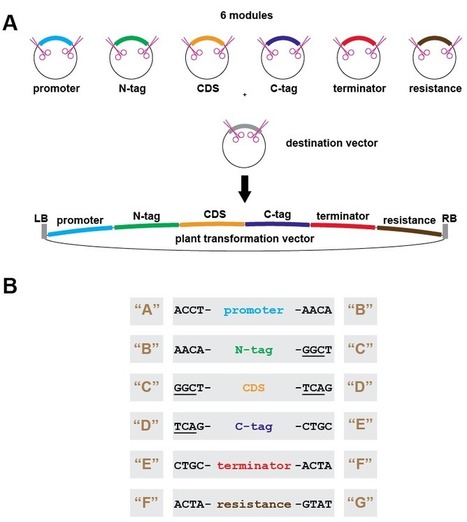




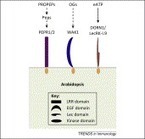


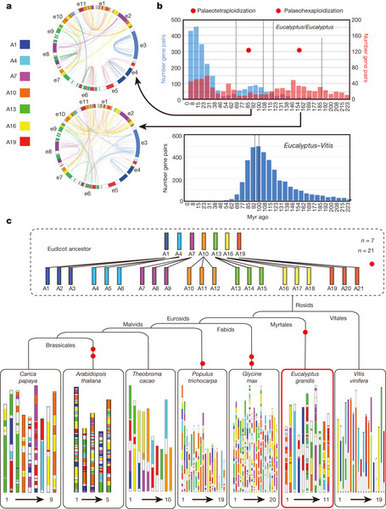






I made the point in discussions on this that the polyphenols and other secondary metabolites are higher in organic crops because they're actively combatting pathogens - which the study makes no mention of...as in, fungi and bacteria, which may be producing all sorts of nasties. Aflatoxins come to mind.
The abstract also makes no mention - which the BBC report on this does - that the organically-grown plants were generally lower in protein content. Which, unlike polyphenols et al., ARE essential nutrients!